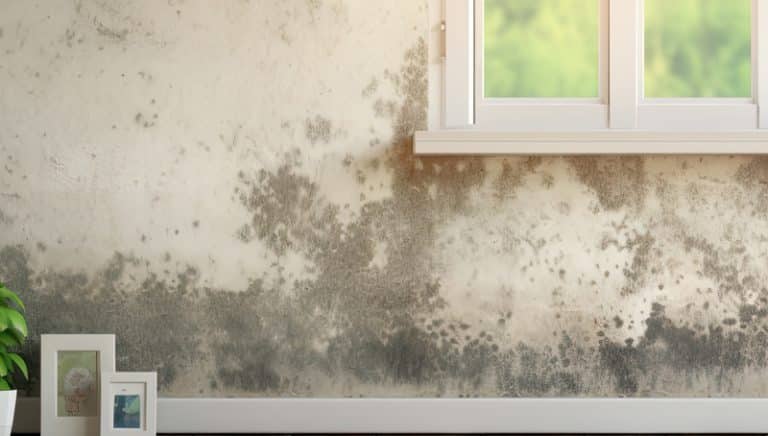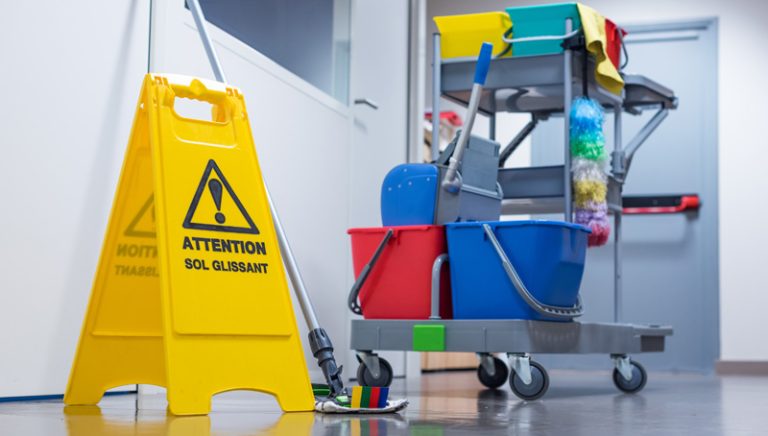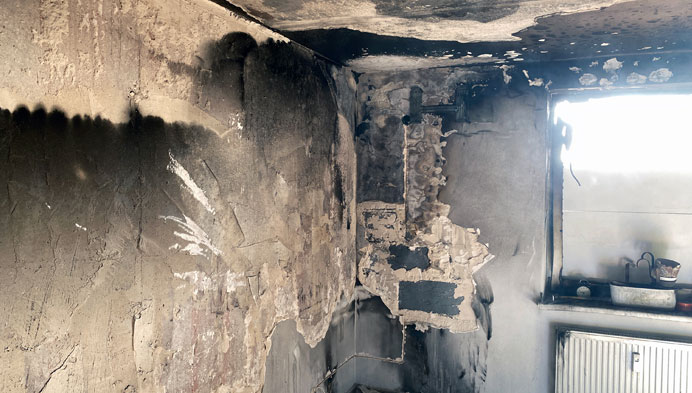Musty smells in your home are not only unpleasant, but they can also pose a health risk to your family—especially when your home smells musty due to mold overgrowth. Mold is a serious issue that no homeowner should take lightly. On one hand, it can be costly to get rid of; on the other, it can trigger allergies, sinus infections, and other respiratory illnesses.
If you notice musty smells or other signs of mold in your home, your best bet is to hire experienced mold remediation specialists to help identify the issue, develop a plan to tackle it, and help prevent future mold growth.
What can you do when your home smells musty? Is it time to call your mold remediation services? Find out from this article below:
Table of Contents
What is Mold?
Mold is a type of fungi that needs humid indoor and outdoor environments to thrive, posing a risk to your home and your health. Around the house, you’ll most likely find it in kitchens, bathrooms, basements, ceilings, drywall, and even carpets, curtains, and other textiles. Mold grows in multicellular structures (called hyphae) that reproduce through microscopic mold spores invisible to the naked eye. However, it grows quickly, so by the time you notice black, blue, or green patches of it in areas with excess moisture, it’s a sign that you have a serious mold issue to tackle.
You can find many types of mold around the home, each with slightly different characteristics:
- Penicillium is the most common type of mold that grows in green patches and thrives on various materials, including wallpaper, carpets, and mattresses. While it’s only moderately toxic, it can trigger allergic reactions in some.
- Cladosporium comes in a greenish-black color and thrives on a variety of surfaces. It’s not particularly harmful to your health unless you have allergies.
- Alternaria is also an allergenic mold, often found in damp areas in the bathroom and below the sink. You can recognize it by its brownish or green color and velvety texture.
- Aspergillus has a greenish-white color and grows on decaying organic matter. It is not harmful unless you have a weak immune system.
- Stachybotrys chartarum, or Black Mold, is a harmful toxigenic mold often found in water-damaged homes. Inhaling its spores can trigger respiratory issues and severe infections.
Understanding the differences between these varieties helps determine the mold damage in your home. But no matter which type you’re dealing with, you want to remove it from your house immediately to protect your home and family.
What Does Mold Smell Like?
Mold has a damp, stale, musty smell lingering in the air, even after proper ventilation and thorough cleaning of the space. Mold grows quickly; that’s why you should tend to it immediately to reduce the health risk and the damage to your property. Unfortunately, even after the mold has died, the musty smell can linger on when it has grown into carpet, curtains, and walls. That’s why it’s worth consulting a mold removal specialist at the first sign of trouble so they can inspect your property for mold damage and start the removal procedure.
What Causes a Musty Smell in Your Home?
If you’re lucky, the causes of musty smells in your home have nothing to do with mold and are easy to tackle with cleaning or ventilating. The most common culprits include:
- Cigarette smoke
- Poor airflow
- An unclean HVAC system
- Spilled food
- Pet urine accidents
Even though these issues are a nuisance, they are often temporary, and deep cleaning will help eliminate them.
Also Read: How to Identify Mold in Your Home: Signs and Symptoms
What You Should Do About the Musty Smells in Your Home
If cleaning doesn’t help get rid of the musty smells in your home, consider taking the following steps:
Mold: Mold and mildew love excess moisture, stagnant air, dark corners, and exposed dirt. The surfaces they penetrate continue to smell even after the mold has died. Therefore, your best chance to get rid of them permanently is through professional mold remediation restoration services.
Poor airflow: Proper air ventilation is necessary for optimal indoor air quality. To prevent musty, stale odors from lingering in your home, ensure that your humid areas are thoroughly ventilated.
An unclean HVAC system: If your HVAC system is old and not regularly maintained, it can circulate dust, dirt, and grime, causing musty smells around the house. Therefore, cleaning your ducts periodically will help prevent unwanted odors and improve the air quality in your home.
Cigarette smoke: If you notice a cigarette smell when no one smokes in the house, it may be coming from your walls, as this unpleasant smell can linger on even years after the previous owner moved out. Professional cleaning, deodorizing, and sealing of the walls can help tackle this issue.
Uncleaned stains: Food spills or pet urine accidents can penetrate your carpets, causing unpleasant musty smells. Even if you clean your carpets regularly, you can only get rid of such odors with the help of professional carpet cleaning services.
How to Prevent Mold from Growing in Your Home
When it comes to mold, prevention is undoubtedly a better solution than trying to tackle it:
Regular cleaning: You have to maintain a clean home to be able to notice any sign of mold growth. Don’t forget to pay extra attention to damp areas such as the kitchen and bathroom.
Moisture control: If your home is particularly humid, you can use air conditioners or dehumidifiers to remove the excess moisture from the air. Aim to reduce the humidity levels below 50%, and use space heaters or a hair dryer in damp areas to prevent any mold growth.
Air circulation: You need adequate airflow to fight mold in the long run. While your whole home should be insulated and properly ventilated to promote better air circulation, pay particular attention to damp areas, such as the kitchen, bathroom, and laundry rooms.
Signs You Have Mold in Your Home
Mold usually starts with the discoloration of walls and ceilings, followed by a musty smell. Depending on the type of mold, you will be able to recognize it in your damp areas or by the source of water damage to your home. Look for patches of dark spots, warping on the walls, and tarnished tiles in the bathroom—they are all signs of mold!
There are other more unpleasant signs that you may notice in yourself: a cold with allergy-like symptoms, fatigue, irritation of the skin, or even a bloody nose.
What to Do if You Have Mold in Your Home
If you’ve found the causes of mold in your home, your best bet is to react quickly and contact your mold remediation restoration services. You may feel tempted to do the mold cleanup yourself. However, this might worsen the situation and make it spread faster, posing additional health risks to your family.
The best thing you can do is call a mold removal expert at the first sign of trouble. In the meantime, turn off your air conditioner or heater and stop all fans to avoid mold spores from circulating, and stay away from the affected areas as these spores can spread through your body and clothes.
Call a Mold Remediation Specialist Right Away!
Unpleasant smells in your home can be a sign of a myriad of problems that often can’t be tackled by the homeowner alone. A musty smell caused by mold, in particular, needs immediate attention to reduce health risks and damage to your property.
Professional mold removal services inspect your home to identify the type of mold you’re dealing with and develop a mold removal plan, including dehumidifying moist areas, restoring or discarding materials that the mold has penetrated, and repairing the structure of your home if necessary. Residential and commercial mold remediation services have specialized equipment to remove mold spores from the air and use industrial antifungal products, which household products cannot compare to.
Conejo Restoration is your one-stop environmental inspection service company serving the Conejo Valley and surrounding areas. We answer the need for residential and commercial environmental inspections focused on mold, mildew, allergens, water damage, and indoor air quality. The professionals at Conejo Restoration will find and remove all mold from your property and restore the damage it caused. We can also address any moisture issues within your home that may have caused mold growth to prevent it from coming back to provide a healthier environment for your family.
Ready to tackle your mold issue and make your home more healthy and comfortable? Call Conejo Restoration at (805) 338-6653 today or schedule a free mold inspection service online.





